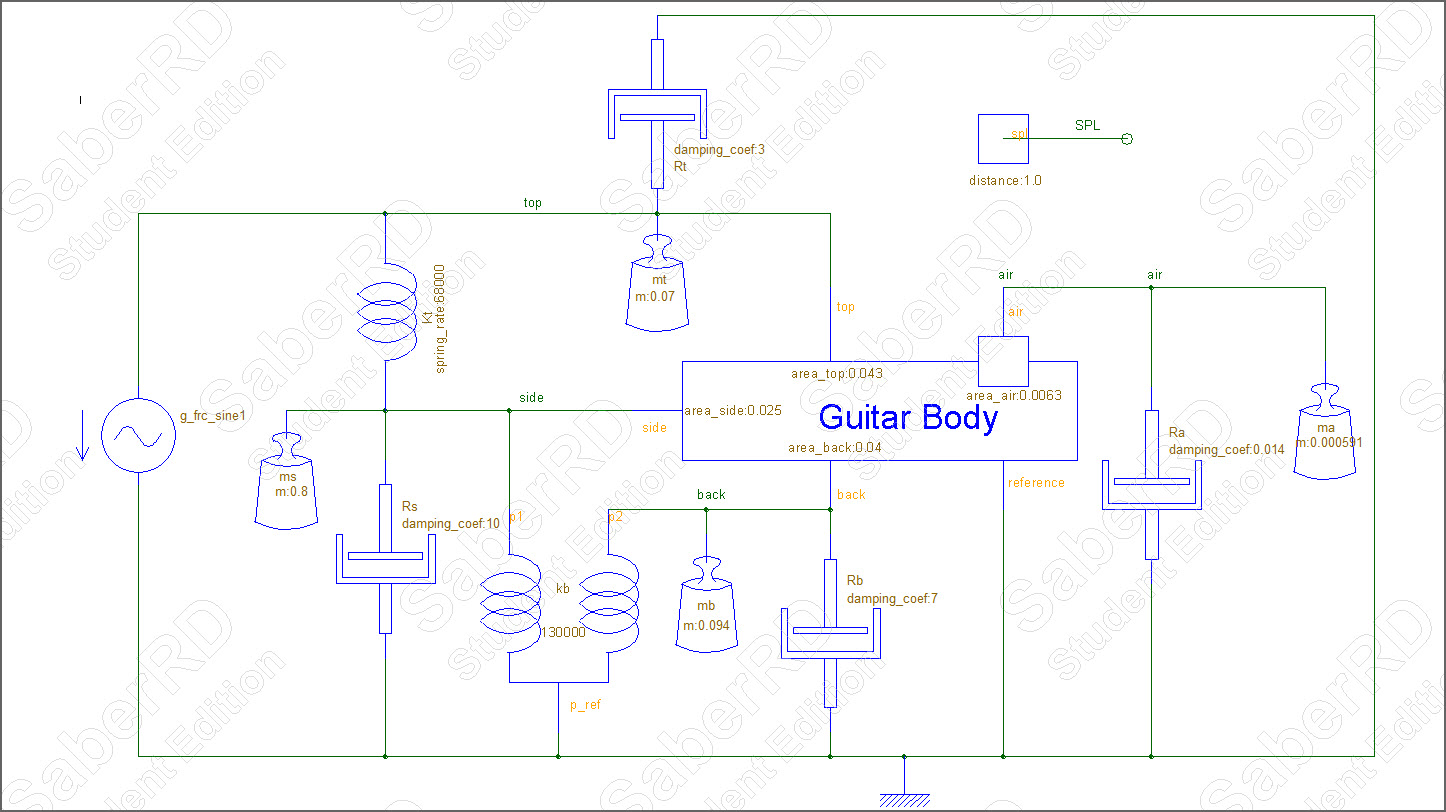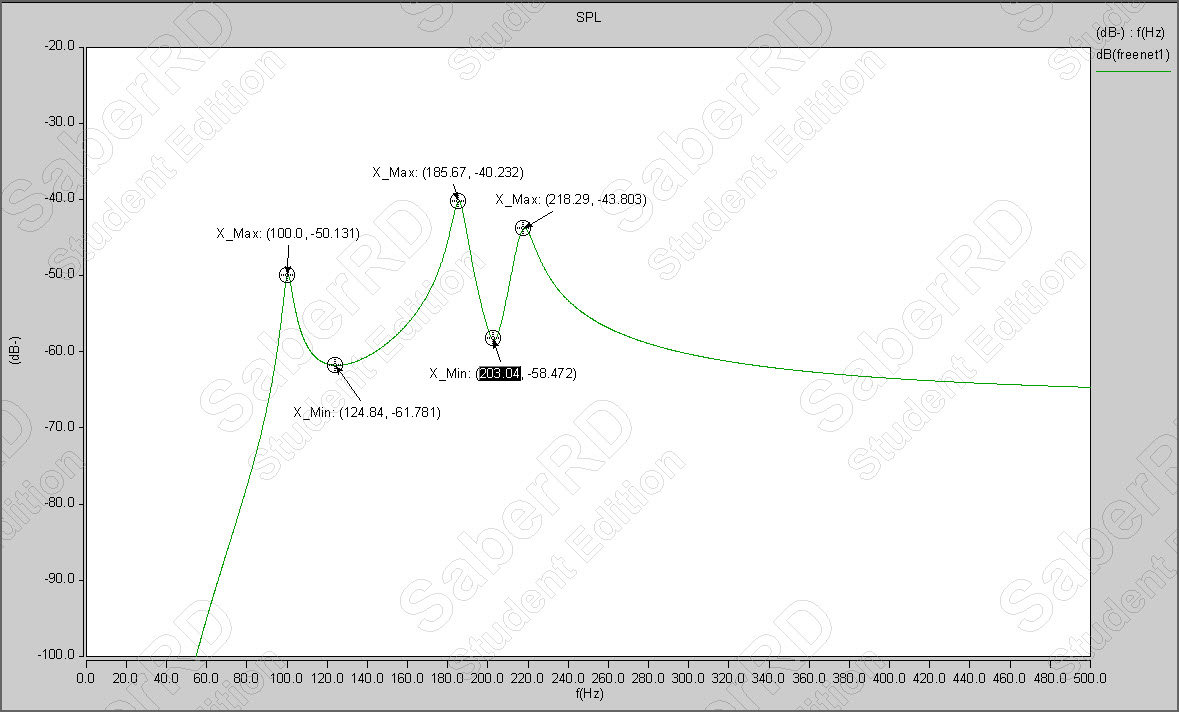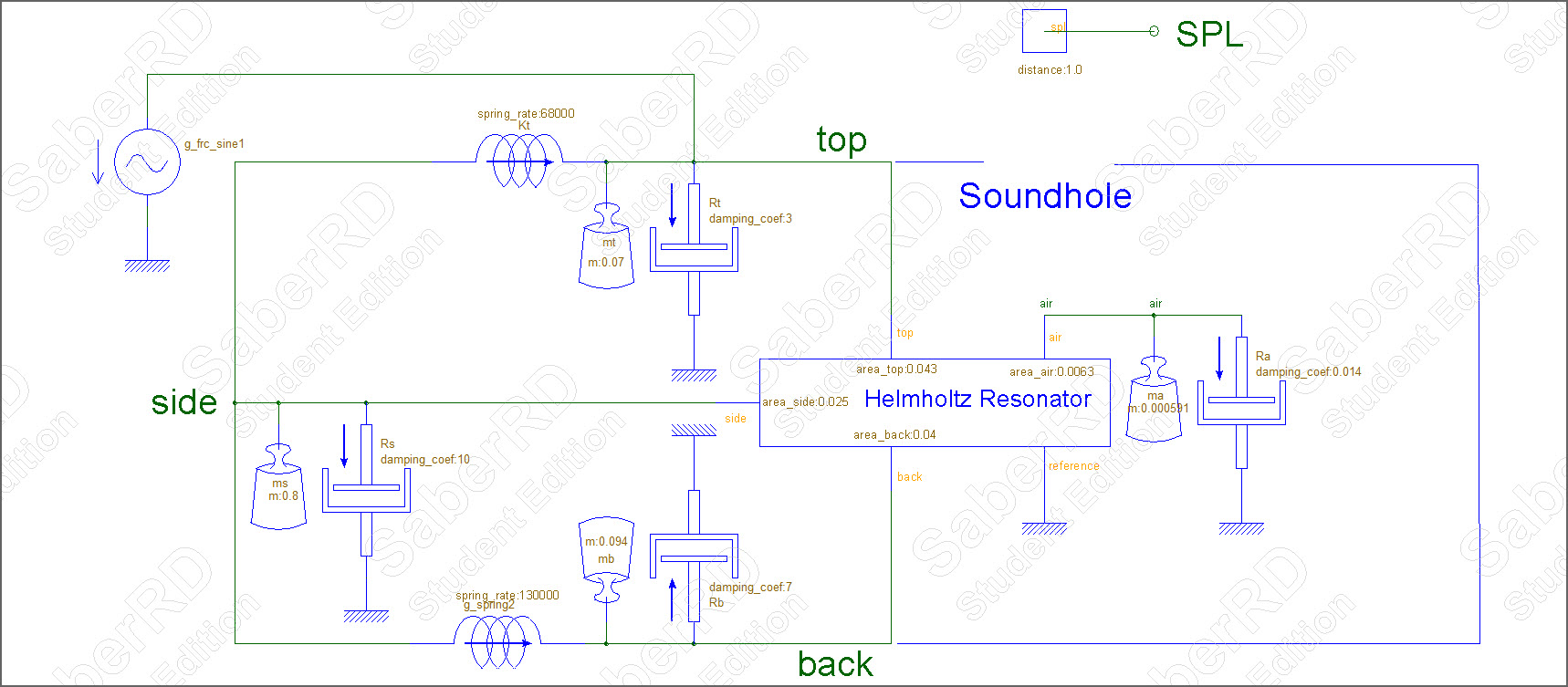Post
by dwsdolce » Wed May 03, 2017 2:29 am
The DAE that this picture represents is identical to the model you have in the book. The back is not connected directly to the sides. There is a spring on the back whose force is equal to Kb times the sum of the motion of the back and sides and there is another spring on the sides whose force is equal to Kb times the sum of the motion of the back and sides. This is the core of the question that I was asking in the other post. The DAE in your book results in what is drawn. This is not limited to SaberRDS but it is a core principal of Mechatronic systems that a number of simulators support. It is based on the concept that physical systems can be modeled using acausal/conservative connection semantics where each element has a through and across variable at the connection. It holds for translational, rotational, thermal, pneumatic, hyrdraulic, electrical, magnetic etc...
Another way to look at it is to ask the question: Is there any force applied to the back from the side or to the side from the back. In your equation there is not. If there were coupled then the term would be Kb(ys - yb) in the side equation and Kb(yb-ys) in the back equation. If they are stiffly connected then the easiest way to represent that would be to just sum the back and side mass. In addition, if they are connected then the back and sides would have the same motion. Running your model through Matlab/Octave and looking at the ys and yb terms shows that they do not have the same motion. They are not directly connected. The result of Matlab/Octave, using your solution of the DAE, agrees with the result of running this model in SaberRDS.




 .
.